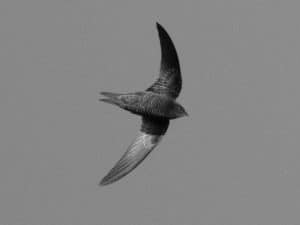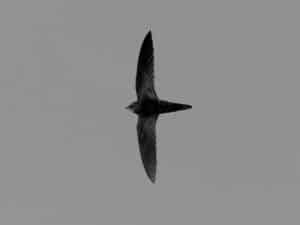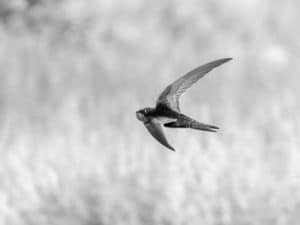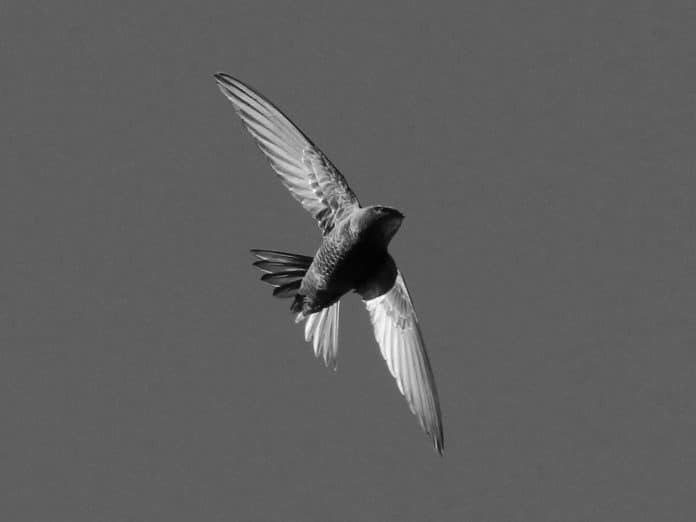Introduction to the African Swift in Tanzania
Tanzania is a birdwatcher’s paradise, with its diverse range of avian species. One bird that stands out among the rest is the African Swift in Tanzania. This remarkable bird is known for its impressive aerial acrobatics and its ability to soar over the savannah with grace and agility. In this article, we will explore the habitat and distribution of the African Swift in Tanzania, as well as its physical characteristics, behavior, and mating habits. Whether you are an avid birdwatcher or simply have a love for nature, spotting the African Swift in Tanzania is an experience you won’t want to miss.
Habitat and Distribution of the African Swift in Tanzania

The African Swift can be found throughout Tanzania, but it is most commonly spotted in the northern part of the country, particularly in the Serengeti National Park and the Ngorongoro Conservation Area. These areas offer the perfect habitat for the swift, with their vast grasslands, open plains, and scattered trees. The African Swift prefers open spaces for hunting insects, as well as cliffs and caves for nesting. It is a highly adaptable bird and can also be found in urban areas, where it often builds its nests on tall buildings.
Physical Characteristics of the African Swift
The African Swift is a medium-sized bird, with an average length of 20 centimeters and a wingspan of about 50 centimeters. It has a streamlined body and long, pointed wings, which enable it to fly swiftly through the air. The plumage of the African Swift is predominantly black, with a white patch on its throat and a pale grey belly. Its short, forked tail is a distinctive feature, allowing for enhanced maneuverability during flight. The swift has a sharp, hooked beak, perfect for catching insects mid-air, and its feet are small and weak, as it spends most of its time in flight.
Behavior and Mating Habits of the African Swift
The African Swift is a highly sociable bird, often seen in large flocks, especially during the breeding season. These flocks can consist of hundreds or even thousands of individuals, creating a mesmerizing spectacle as they fly together in perfect synchronization. The swift communicates with its fellow flock members through a series of high-pitched calls, which can be heard from a considerable distance. During the breeding season, the male African Swift performs an elaborate aerial courtship display to attract a mate. This display involves soaring high into the sky, diving and swooping, and emitting high-pitched calls. Once a pair has formed, they will build their nest together on a cliff face or in a cave, using materials such as twigs, feathers, and saliva.
Birdwatching Tips for Spotting the African Swift in Tanzania

Spotting the African Swift in Tanzania requires patience and a keen eye. Here are some birdwatching tips to help you in your quest:
- Timing is crucial: The African Swift is most active during the early morning and late afternoon, so plan your birdwatching trips accordingly.
- Look to the skies: The African Swift spends the majority of its time in flight, so keep your eyes on the sky and be ready to spot their swift movements.
- Listen for their calls: The high-pitched calls of the African Swift can help guide you to their location. Familiarize yourself with their distinct calls before embarking on your birdwatching adventure.
- Seek open spaces: The African Swift prefers open spaces for hunting insects, so focus your attention on grasslands, open plains, and areas with scattered trees.
- Use binoculars: The swift’s small size and swift flight make it challenging to spot with the naked eye. Invest in a good pair of binoculars to enhance your birdwatching experience.
Best Birdwatching Locations in Tanzania for the African Swift
Tanzania offers a plethora of birdwatching locations, but for the best chance of spotting the African Swift, consider visiting the following:
- Serengeti National Park: Known for its iconic wildlife, the Serengeti is also home to a diverse range of bird species, including the African Swift. Explore the park’s vast plains and keep an eye out for these swift flyers.
- Ngorongoro Conservation Area: This UNESCO World Heritage Site is a haven for birdwatchers, with its varied habitats and abundant birdlife. Take a hike along the crater rim and enjoy breathtaking views while searching for the African Swift.
- Tarangire National Park: Famous for its large elephant herds, Tarangire is also a fantastic birdwatching destination. Join a guided tour or venture out on your own to spot the African Swift among the park’s baobab trees and grassy plains.
Conservation Efforts for the African Swift in Tanzania
The African Swift, like many other bird species, faces several threats to its survival. Habitat loss, due to deforestation and urbanization, is a significant concern. Additionally, climate change and pollution pose further challenges. Fortunately, there are ongoing conservation efforts in Tanzania to protect the African Swift and its habitat. Organizations are working to raise awareness about the importance of preserving the natural environment and implementing sustainable practices. By supporting these conservation efforts, birdwatching enthusiasts can contribute to the long-term survival of the African Swift and other avian species in Tanzania.
Other Bird Species to Look Out for While Birdwatching in Tanzania
Tanzania is home to over 1,000 bird species, making it a birdwatcher’s paradise. While searching for the African Swift, keep an eye out for other notable species, including:
- Lilac-breasted Roller: This vibrantly colored bird is a sight to behold. Its lilac breast and turquoise plumage make it one of the most striking birds in Tanzania.
- Grey Crowned Crane: With its distinctive grey plumage and golden crown of feathers, the Grey Crowned Crane is a beautiful and iconic bird of Tanzania.
- African Fish Eagle: Known for its unmistakable call and impressive fishing skills, the African Fish Eagle is a symbol of Africa’s waterways.
- Secretary Bird: This unique bird of prey is instantly recognizable with its long legs and crest of feathers. Keep an eye out for it stalking its prey in Tanzania’s grasslands.
Recommended Birdwatching Tours and Guides in Tanzania

To make the most of your birdwatching experience in Tanzania, consider joining a guided tour. These tours are led by experienced birdwatching guides who have extensive knowledge of the local avian species. They can take you to the best birdwatching locations, help you identify different species, and provide valuable insights into their behavior and habitats. Some recommended birdwatching tours and guides in Tanzania include:
- Tanzania Birding Adventures: This tour company specializes in birdwatching safaris and offers customized itineraries to suit your preferences. Their knowledgeable guides will ensure you have an unforgettable birdwatching experience.
- Nature’s Wonderland Safaris: With a focus on eco-tourism and conservation, this tour operator offers birdwatching tours led by expert guides. They prioritize sustainable practices and responsible tourism.
- Birding Tanzania: This specialized birding tour company offers a range of tours catering to all levels of birdwatching enthusiasts. Their guides are passionate about birds and will share their expertise with you.
Conclusion: A Memorable Birdwatching Experience with the African Swift in Tanzania
Birdwatching in Tanzania is a truly captivating experience, and the African Swift is a bird that will leave a lasting impression. From its graceful flight to its sociable nature, observing the African Swift in its natural habitat is an adventure like no other. By exploring the best birdwatching locations, understanding its behavior and habitat, and supporting conservation efforts, you can help ensure the survival of this remarkable bird. So pack your binoculars, immerse yourself in the beauty of Tanzania, and get ready for a memorable birdwatching experience with the African Swift.


































